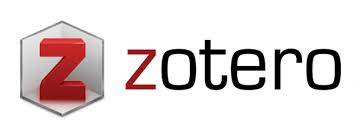ANALISIS PERMINTAAN DAGING SAPI DI KOTA KUPANG
Abstract
This study aims to determine the variation in consumer demand for beef as well as to identify and analyze factors that affect the demand for beef. Method of the research applied was survey. Data were collected through two stages. Firstly, four villages were selected purposively. The second stage was the selection of 163 households as respondents by performing proportional random sampling. Data were analyzed by applying correlation and multiple linear regression using Cobb-Douglas function. The result showed that the average consumption of beef is 3±2,41 kg per month (Coefficient of Variation= 64%). Correlation analysis showed that there are four factors that have very strong relationship (P<0,01) on the beef demand (Y); i.e., the price of beef (X1), income (X5), number of family member (X6), and level of education (X7). Regression analysis showed that all four factors identified have a very significant effect on demand for beef (P<0,01) and can be explained by the Cobb-Douglas equation as follow: Y= 12,246 X1-1,057 X50,952 X60,392 X70,231 (R2 = 0,77). The coefficient of determination R2 = 0,77 indicates that 77% of the variation of the amount of beef demand by consumers in Kupang Municipality can be explained simultaneously by the four factors identified, while 23% is explained by other factors that are not involved in this research with beef demand was elastic.
ABSTRAK
Penelitian ini bertujuan untuk mengetahui besarnya variasi permintaan konsumen terhadap daging sapi serta mengidentifikasi dan menganalisis faktor-faktor yang berpengaruh terhadap permintaan daging sapi. Metode penelitian yang digunakan adalah metode survei. Data dikumpulkan melalui dua tahap, yakni tahap pertama adalah menentukkan empat kelurahan contoh secara purposif dan tahap kedua adalah penentuan 163 responden contoh yang dilakukan secara acak proporsional. Selanjutnya data dianalisis dengan menggunakan analisis korelasi dan regresi linear berganda menggunakan fungsi Cobb-Douglas. Hasil penelitian menunjukkan bahwa rata-rata konsumsi daging sapi adalah 3±2,41 kg per bulan (Koefisien Variasi = 64%). Analisis korelasi menunjukkan bahwa terdapat empat faktor yang memiliki hubungan yang sangat kuat (P<0,001) terhadap permintaan daging sapi (Y) yaitu harga daging sapi (X1), pendapatan (X5), jumlah anggota keluarga (X6), dan lama pendidikan (X7). Selanjutnya dalam analisis regresi menunjukkan bahwa keempat faktor yang diidentifikasi berpengaruh sangat nyata terhadap permintaan daging sapi dan dapat diterangkan melalui persamaan Cobb-Douglas: Y= 12,246 X1-1,057 X50,952 X60,392 X70,231 (R2 = 0,77). Koefisien determinasi R2 = 0,77 mengindikasikan bahwa 77% variasi jumlah permintaan daging sapi oleh konsumen di Kota Kupang dapat dijelaskan oleh keempat faktor yang diidentifikasikan sedangkan 23% dijelaskan oleh faktor lain yang tidak diperhitungkan dalam penelitian ini dengan permintaan daging sapi bersifat elastis (b1= 1,057).
Downloads
References
Simatupang P, Hadi PU. 2004. Daya saing usaha peternakan menuju 2020. Wartazoa 14(2):45-57.
Sudjana. 1989. Metode Statistika. Penerbit Tarsito, Bandung.
Weol EF, Rorimpandey B, Lenzun GD, Endoh EKM. 2014. Analisis pengaruh
 Fransiskus Yulius Dhewa Kadju(1*)
Fransiskus Yulius Dhewa Kadju(1*)





.jpg)





